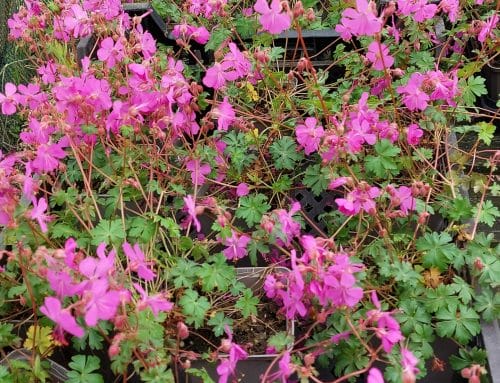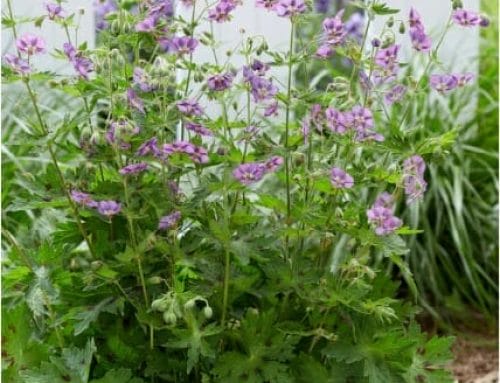In this blog we’re going to investigate what is meant by Alpine or Rock plants, which Geraniums this applies to and how to grow and care for them successfully.
Okay so let’s start at the beginning, the term Alpine refers to the region where these sorts of plants have originated from. The alpine region is found between the tree line and snow line on a mountain.
Alpine conditions are pretty tough to grow in. Plants are very hardy with temperatures varying from a top temperature of 15.5C in the summer to -34C in the winter. Summers are short and winters are long (starting in October and lasting until May). The soil conditions are quite barren with few nutrients. Winds will be strong and drying. The ultra-violet light from the sun will be strong. And there is very little rainfall, throughout the year approximately 30cm of rain can be expected.
Alpine plants will display extreme adaptations to the harsh environment they have come from. They are usually small with rounded, hummock shapes to protect themselves from the snow. They typically have small hairy leaves to reduce transpiration (loss of water). The leaves may also have a waxy cuticle which will also work to reduce transpiration but also protect them from the strong sun light. Typically, they are slow growing and will have an extensive root system for anchoring against strong wind and seeking out the limited water supplies.
Some geranium species that are from alpine regions are:
Geranium cinereum – Cinereum refers to the grey down on the underside of the leaves and is also known as the Ashy Cranesbill. Cinereum species are native to the Pyrenees.
Geranium macrorrhizum – Macrorrhizum literally translates to Big Root and is also known as Big Root Cranesbill. Macrorrhizum species are native to the south east Alps.
Geranium subcaulescens – Subcaulescens or subcaulescent means born on a very short stem, referring to the plants diminutive stature. It is native to Italy, Turkey and the Balkans.
Erodium’s who belong to the same Family as Geranium’s, are also known as Alpine Geraniums.
Growing conditions required for these resilient and tough little plants are quite minimal. Primarily they require and open and free draining compost with low nutrient levels, like a seed compost. Full sun is desirable, but part shade will be tolerated. A mulch of grit after planting would be beneficial. Most importantly, although these plants as hardy they will need protection from winter wet and cold. The combination of wet and cold is likely to kill them.
There is an excellent Alpine House at Kew Gardens with many different types of alpine plants in residence. RHS Wisley and RHS Harlow Carr also have some good examples of Rock Gardens and Alpine Houses.
Further reading:




